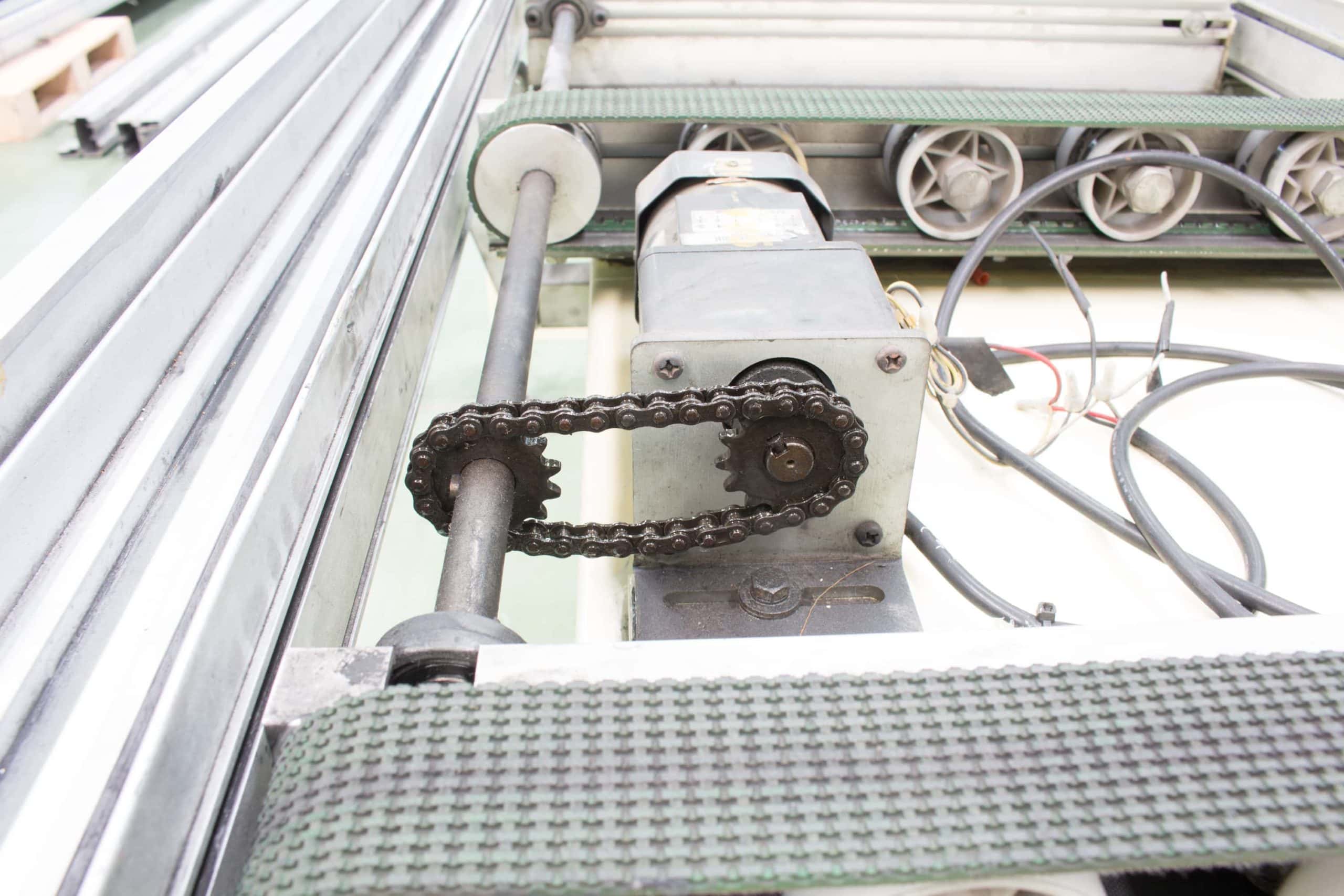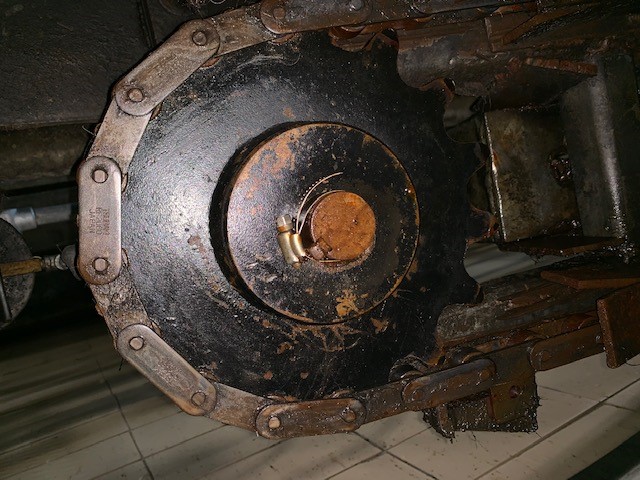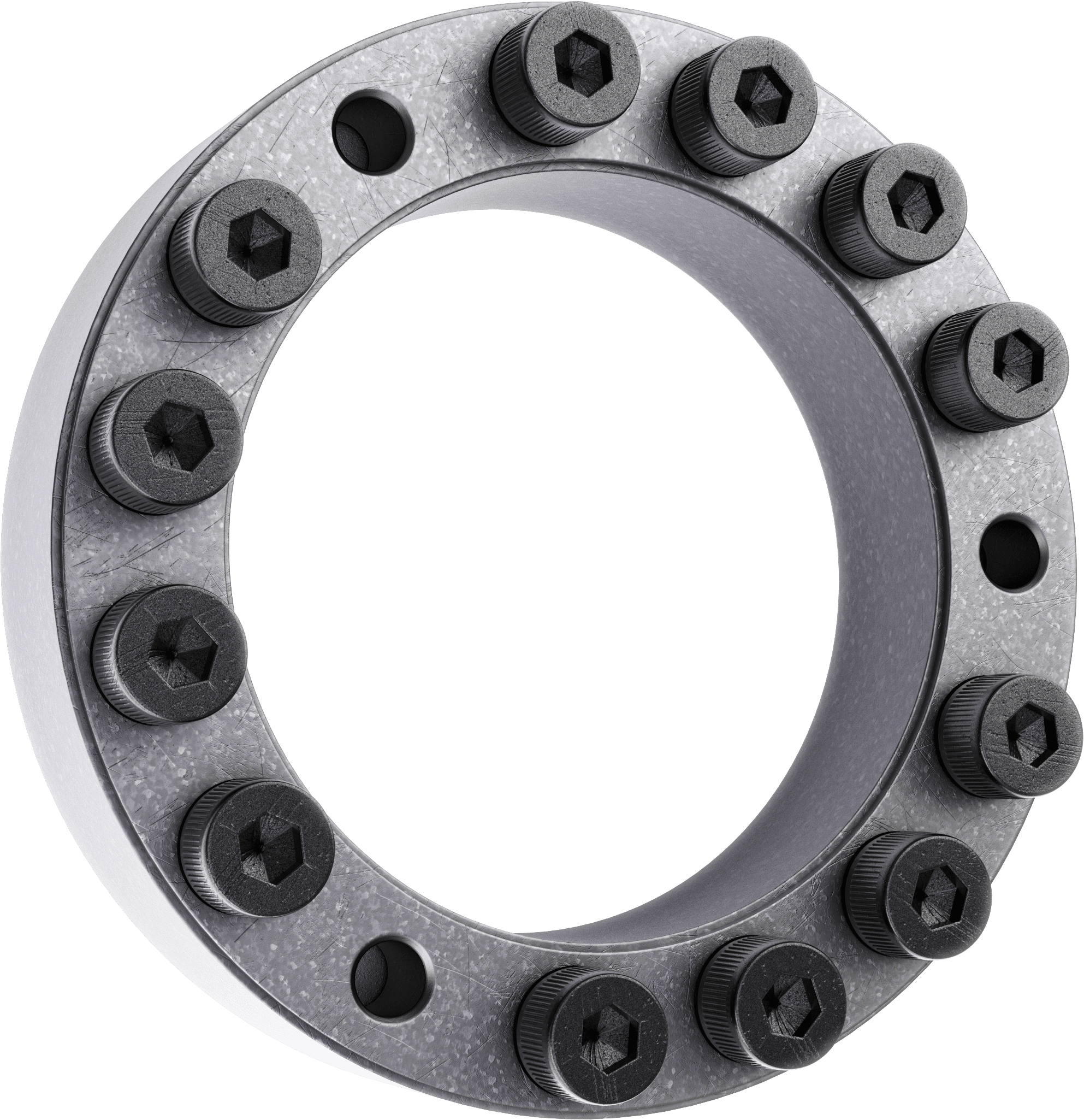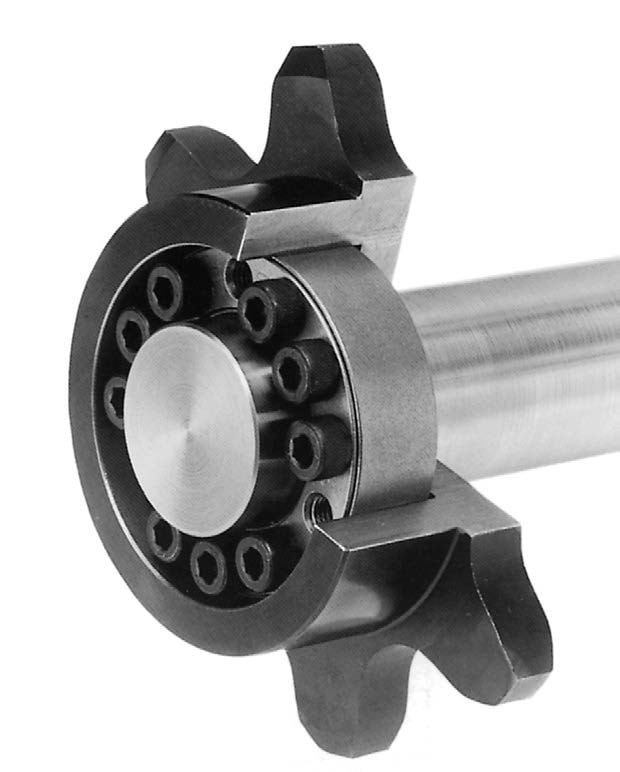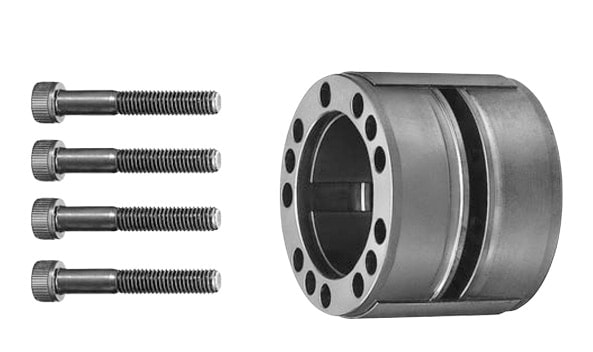Keyless POWER-LOCK® Durable Drive Shaft Connections
Keyed joints are popular solutions for connecting drive shafts to additional machine components, such as gears, pulleys, and sprockets. Although keyed joints are often seen as the industry standard, they have several limitations in high-torque applications.
Understanding these limitations can help engineers identify more effective solutions for their drive shaft connections.
How keyed joints work
In a keyed connection, the “key” is a rectangular steel piece that fits snugly into carved notches, called “keyways,” on the drive shaft and the hub of a sprocket, gear or pulley. The key effectively locks the two pieces together and allows the drive shaft to transmit power and rotation to the other machine components.
Common problems with keyed systems include fretting and corrosion caused by the metal-to-metal contact between the key and the keyway. If a key fits too loosely within the keyway, backlash – or short periods of lost motion – can occur while starting, stopping or transmitting power during normal operation. If the key fits too snugly within the keyway, it might become difficult to remove over time, complicating future repair or maintenance. Trying to correct these issues by adjusting the fit of the keyway is tedious and can be expensive.
Keyways also create an additional stress point in the power transmission assembly, which reduces shaft strength and the ability to transmit torque. This is why keyed systems are not ideal for shock or impact loads, where high torque is applied in sudden, short bursts.
Alternatives to keyed joints
Other popular drive shaft connection systems include interference fits, also known as press fits. In an interference fit, the drive shaft and hub are connected by two tight fitting parts that are held together by friction once pushed together. The connection can also be welded together for added stability. Interference fits also have limitations, however, because they prevent operators from being able to easily remove the shaft from the hub for maintenance or replacement.
A keyless POWER-LOCK® system can solve many of these engineering and maintenance challenges. Tsubaki offers a keyless POWER-LOCK device which relies on concentric surface pressure to affix gears, sprockets, and other drive components to a shaft.
Benefits of a keyless POWER-LOCK system
The keyless POWER-LOCK connection is durable and not affected by torsional load reversal or impact, which can damage keys and keyway connections. The Tsubaki POWER-LOCK can also support axial loads, where force is applied through the axis of the shaft-hub connection. Typical applications with these forces include indexing tables and bevel gears.
The POWER-LOCK is also easy to install – simply slide the device into position and tighten the bolts per the instruction manual. The components can be disassembled just as easily, with most models capable of being disassembled and reinstalled 10 times, so maintenance or replacement of worn parts is simpler and faster than it is with other connection methods.
You can also eliminate the need for time-consuming machining of keys and keyways with POWER-LOCK. No metal needs to be removed from the shaft to install the POWER-LOCK, so the strength of the shaft can be kept at its original diameter. This is especially important for hollow-shaft applications and long, heavy shaft applications.
To learn more about the Tsubaki Keyless POWER-LOCK system, click here, or contact us today to request specific information from our team.


